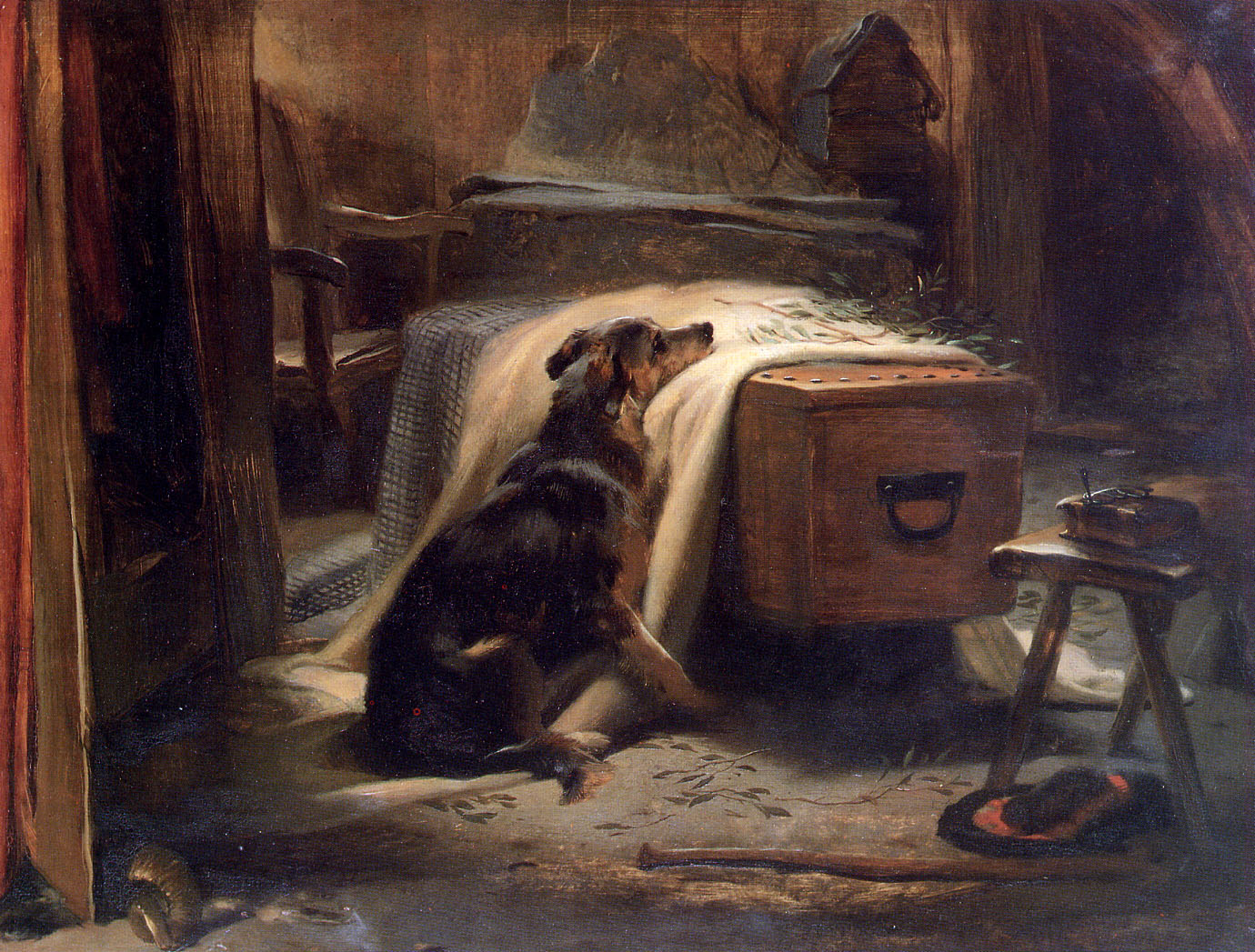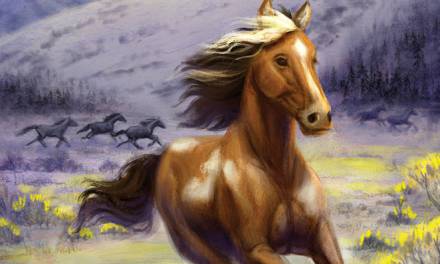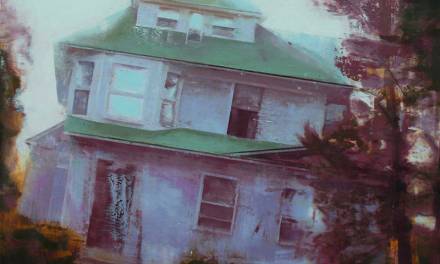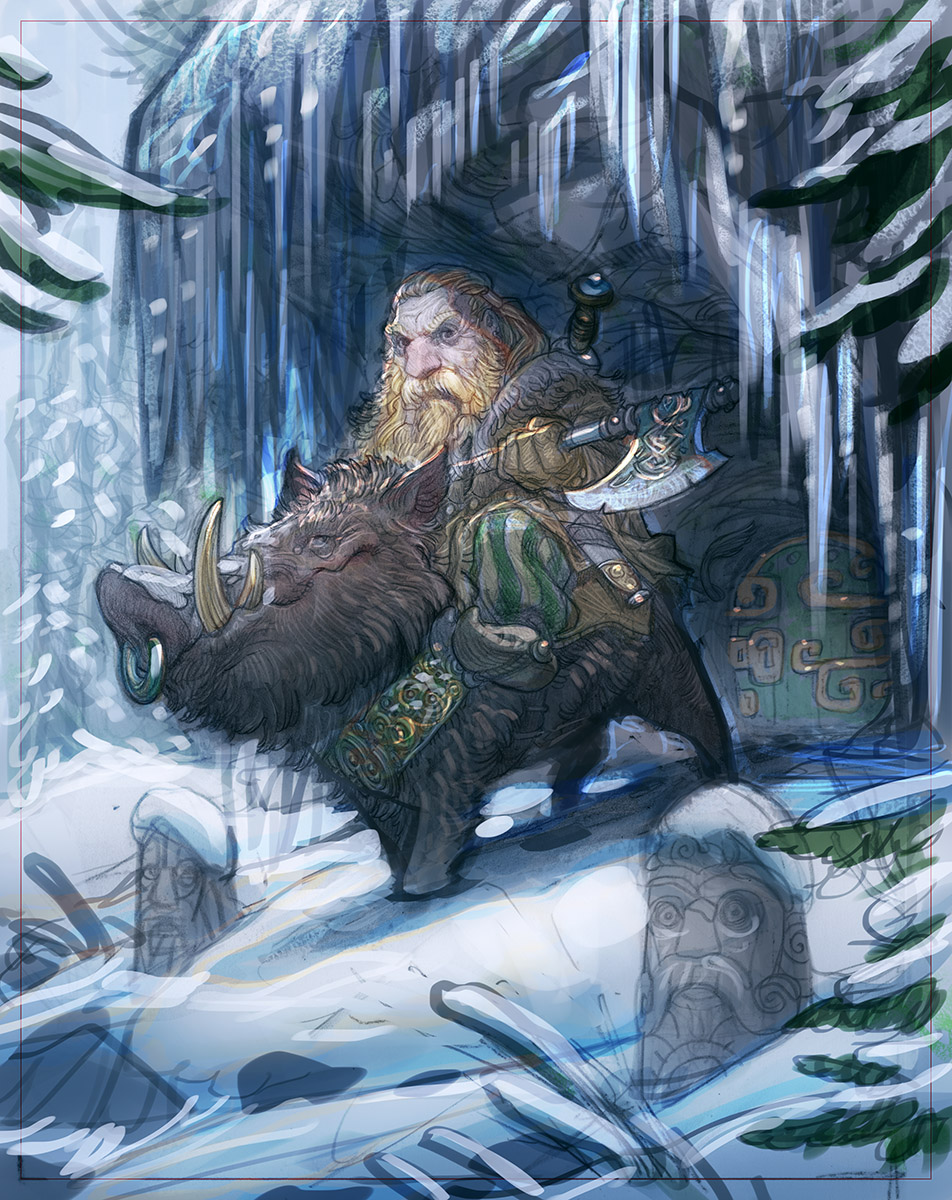This is an excellent painting. The lighting, the composition, the execution, they are all excellent. I look at it and don’t know what is going on exactly, but I love it. I want to know more about it. I want to know what compelled the painter to make this image.
So I look at the title.
The title is “The Old Shepherd’s Cheif Mourner“, painted by Edwin Henry Landseer.
I enjoyed the technical excellence of the painting, but it wasn’t until I read the name that I truly appreciated the painting’s narrative excellence as well. I look at the painting again, and now the dog’s face takes on a sense of loss that is heartbreaking. Layers and layers of story now begin to unfold around the image for me.
Most of the time I dismiss titles as unnecessary nonsense by which lazy artists prop up technically inferior work because it lacks the ability to stand on its visual merits alone.
And it is true that in the past there have been instances where artists have taken a shortcut to applause by coming up with names for their work that sound fashionable or hyper-intellectual.
There have also been hapless artists who just wanted to paint something simple, like a lake, because it made them happy, but who then felt compelled to add some title implying that the image is really a statement on the post-industrial consumerism or the plight of the proletariat in eastern bulgaria or some fashionable elitist cause. All because they were afraid of their work as being labeled sentimental or anti-intellectual because it was representational and wasn’t shocking.
This appreciation of psuedo-intellectual titles seems to have fallen away somewhat in the past few years. (I personally thank Frank Frazetta and video games for this)
There even exist online name generators to lampoon the whole idea of this sort of naming. Consider http://noemata.net/pa/titlegen/, which will generate three pieces of abstract art at random, all with suitable titles.
However, this cultural reaction against fancy names has its drawbacks. And that is that we may forget the great value in a title. I certainly do. In my efforts to avoid trying to sound pretentious I generally name my work something like: Painting #2, Monster #15, George Washington Field-Tackling a Bear #34 and so on.
But there is a classical use for titles. And that is to take an image that is already technically excellent on its visual merits alone, and then provide the viewer with further context and insight into it.
“The Old Shepherd’s Cheif Mourner” is an excellent example of how a name can add to an image, and not be a replacement for technical excellence in one.
Good news! In spite of my false promises involving domesticated camelid mammals, we somehow managed to meet our financial goal in the first 24 hours! So now the Guild is stretching its initial goals and is expandeding its course line-up.
To see what’s happening check out: http://www.kickstarter.com/projects/pathwrightpress/the-lamp-post-guild









Story is king!
Although I don't discriminate against artists who draw just for the sake of drawing instead of conveying a message or a plot behind it.
Thanks for sharing this, Justin!
Where can I buy prints of that incredible abstract art?
Great post Justin, and I love that painting you shared (the Shepherd one, of course). Often I think titles are underrated, and I rarely give them a lot of thought (heck, I rarely name my drawings anyway). But I will say this, naming a piece of art sort of says, “this is my work that I slaved for days to complete, and I am making it my own – MY CHILD!” Anyway, thanks for that thought provoking post, and I am really excited that LPG is funded! I'm certainly hoping we can push through and unlock the Business of Illustration class – that's a topic I'm really eager to learn more about.
Peace,
Will
Wonderful post Justin. I couldn't agree more that the title of a piece can speak so much more and invite the observer to find things they may have missed upon a first viewing. As Joaru above said “Story is King!”.
Also big congratulations about the Lamp Post Guild (I was certain you guys could survive Llamagate). Looking forward to the lessons!
Cheers.
Absolutely against to this idea. Thumbs up for the pompous and well thought out titles. Always supported by a well done painting, of course.
Oliver
Great post Justin. I think that titles can have value if the artist brings the same creativity to them that they did for the painting or story. In some cases titles can add intrigue to the work of art. I find this to be true when literary quotes are used as titles. Think of all the books that have had bits of MacBeth applied as titles: Something Wicked This Way Comes, Nights Black Agents, etc. I am immediately drawn in by the title. Some years back I came across an interesting translation from one of the Psalms that included the words “The night and its shadow.” I was writing ghost stories at the time, and knew I had to come up with a story to go with that title. Turned out to be a sci-fi take on Jack the Ripper when it was finally published on line, but the words from the quote worked perfectly. Back in my college days I also did a project for a Film and Communication class where I made up titles for photographs. It was fun to stretch the meaning of the image, and even add some humor by naming them. I see titles as an additional form of creative endeavor or even, as with the Psalm reference, as a source of inspiration.
Best,
Aaron